Graphium antiphates has a logical English name. Its forewings show five bars of black and white across the front edge; its hind wings have long sword-shaped tails. Its wingspan is two to three inches. It is found in India and other parts of southern Asia. It is sometimes called the Dahlia Butterfly.
In the eighteenth and nineteenth centuries Swallowtail butterflies were named after characters in literature. Antiphates seems an ominous choice of namesakes. In the Odyssey, he was a man-eating giant. None of the Graphium species is gigantic, compared with other Indian Swallowtails, but if fictional giants are considered human, Antiphates could be called a cannibal. Some caterpillars can also be called cannibals; after eating their own shed skins they'll move on to other skins of their own species, if they find any, that have not been shed. These are species that can't afford for populations to become overcrowded. Few, if any, people seem to have reared this species but, typical of the species in which caterpillars can become cannibalistic, it is rarely found in many places.
Photo by Nomadash. Swallowtail species that can become cannibalistic don't mind being the only one, or one of two, of their species in a mixed crowd. Since adult butterflies are nonviolent and those other species don't compete with them for food, species like antiphates probably like this kind of gathering.
Variant forms of this butterfly were listed, in the past, as Papilio pompilius and Papilio alcibiades, which sound like more auspicious namesakes than antiphates. (I don't need to insult The Nephews' educations by explaining who Numa Pompilius and Alcibiades were.) The rule is that the name used in the first accurate description of a species is its "correct" name, though scientists are constantly changing the names of genera when someone argues that species would be better classified in different genera. (Graphium antiphates is distinctive enough, among other Graphiums, that some scientists used to say it belonged in a separate genus, Pathysa.) Subspecies of antiphates include alcibiades, balius, itamputi, matsui, nebulosus, pompilius, and toshikazui. The subspecies live in different places and, apart from alcibiades and nebulosus, "cloudy," the subspecies names refer to places where they are found. (The subspecies now called alcibiades was first documented as Papilio alcibiades . No points for guessing where it's found.) Subspecies names paetus, linga, continentalis, javanicus, ceylonicus, antiphanes, antiphonus, decolor, euphrates, naira, rhabdonicus, kalaoensis, pulauensis, and insularis, and tiomanus have also been used Each subspecies has a slightly, consistently, different pattern of markings. A breakdown of subspecies by countries, with some pictures of museum specimens, is online at
Photo from Wikimedia. Most online sources don't specify the subspecies photographed, but this one is identified as Graphium antiphates pompilius.
Phoro by Twk86, identified as Graphium antiphates itamputi. Potanthus Tip says itamputi is the same as alcibiades.
Photo by Siang Liang Yeoh, from Penang, Malaysia. The great variation in numbers of listed subspecies probably reflects a high degree of individual variation and difficulty in drawing clear lines between subspecies.
Antiphates is a low-altitude species, usually found less than 600m above sea level. It has been found as high up as 2000m. Its habitat is rain forests where the chartreuse and gamboge splotches on its underwings provide camouflage.
It has a selection of food plants in the genera Uvaria, Annona, and Desmos. A more exhaustive list of food plants is found at https://www.funet.fi/pub/sci/bio/life/insecta/lepidoptera/ditrysia/papilionoidea/papilionidae/papilioninae/graphium/ . This means that the butterfly is accustomed to warm temperature, usually warmer than humans prefer, and when temperatures drop into a more comfortable range butterflies may spread out their wings to catch sunshine on the white surface. At least the males do. Females spend more time in the forest, exploring plants that grow well in the shade of bigger plants, and are less often seen. Most of the butterflies photographed (or "collected") are male. Males and females look very much alike.
Photos and drawings of this butterfly have been popular for a long time. It appears, for instance, as the centerpiece of this vintage drawing:
Other uses--literally uses--of butterflies in pop art have been more questionable. I'm trying to imagine who would want to wear, with what, a full set of faded, decomposing wings encased in resin as a necklace. I'm not sure I want to know!
Photo by Lauri R. Dunn Peterson. Using a computer to spin the image of one wing into a mandala, on the other hand, strikes me as witty and pretty.
In this slow-motion video, the "sword tails" seem to flap idly behind the butterfly, but their flapping helps to steer the butterfly. Swallowtails can fly after losing their tails. The tails are optional. Tails give predators something to grab. When intact, however, the tails seem to serve as rudders.
They are primarily pollinators, but males are also composters on polluted puddles, especially those polluted with urine. Like some other tropical butterflies, antiphates can recycle water, safely re-drinking their own fresh urine, which can allow them to survive in dry weather. Even the females in this species are attracted to flowers whose scent humans don't like.
If you enjoy butterfly videos, there are more. Graphium antiphates often join large mixed groups of butterflies at puddles, and people seem to enjoy posting videos of their social behavior. The center of the crowd at a puddle usually consists of unmated males. Many male Swallowtails spend a few days flying about alone, drinking mineral-rich water, before they are ready to mate. Females come to the edge of the puddles to check out the males. Meanwhile males show off and compete with each other to some extent, but also protect each other, whether they think about it or not, by flying up in a confusing cloud of color when disturbed. If the intruder was going to take a bite at a butterfly, that one moves, and the whole flock may escape before the predator can choose an alternate target. It doesn't work perfectly every time--some butterflies are eaten before they've even had a chance to mate--but butterflies are like humans; if a plan works sometimes, they're likely to repeat it every time. Here is a whole page of videos of male Graphium antiphates, and other Indian butterflies, at puddles.
Given this butterfly's taste, it's not surprising that people report that they like to lick sweaty tourists' skins and can easily be photographed perched on someone's finger or clothing. They probably do feel "friendly," or whatever the butterfly version of friendliness may be--maybe grateful that humans were created. I'd still want to wash off after being touched by one.
Photo by Petermarting. In dry places, butterflies are good at finding even small amounts of water. Small amounts are what they need!
For those who prefer still photos, here's a long photo essay of a long visit to a large park in Vietnam, with dozens of nice clear close-up photos and information about several Vietnamese butterflies, including a detailed explanation of another survival benefit of "puddling."
Like many tropical butterflies, they are active all year in some place or other, with multiple generations in a year.
Photo by Marcelfinlay. Couples that look almost identical have been photographed in several places, but wary scientists report that the female of some subspecies is still unknown.
A generation starts when a mother butterfly lays one egg on one leaf of a host plant. Taking care to separate the eggs, she spends a lot of time flitting about, finding good places to lay each egg. There can be fifty eggs altogether.
It takes about three days for an egg to hatch. The caterpillar spends two or three days eating and growing until it splits its first skin. The second, third, and fourth skins also last two or three das, the last one six to seven days. Pupation lasts 11 to 13 days. It takes this butterfly four to four weeks to complete the "immature" stages of its life. I found no estimate of how long the average butterfly flies after it unfurls its wings.
Caterpillars have the typical Swallowtail humpbacked shape, with just two warts on the hump and two at the back end. They can be grayish or brownish green with a strongly countershaded color scheme for camouflage. They often show subtle or heavy crosswise stripes and, apart from the little shield on the thoracic segments (which can have eye spots at the front corners) and forked tail end, resemble baby Zebra Swallowtails, probably due to their eating closely related plants. The humped back contains an osmeterium, which this species is said to be quick to extrude. This is one of the species whose distinctive scent humans can smell, and its scent is described as "foul."
One detailed study of the entire life cycle is found at
Too many good clear photos of things nobody else seems to have documented, for this speces, to pick one to gank. You need to go to that site and see the whole thing.
The pupa looks like a withered green leaf at first; then the pupal shell becomes translucent to show some of the color of the butterfly within.
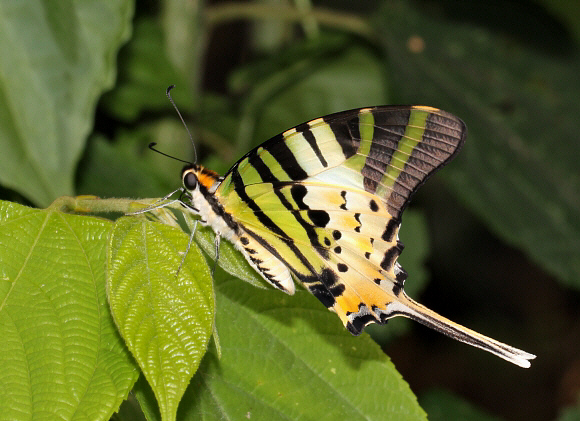
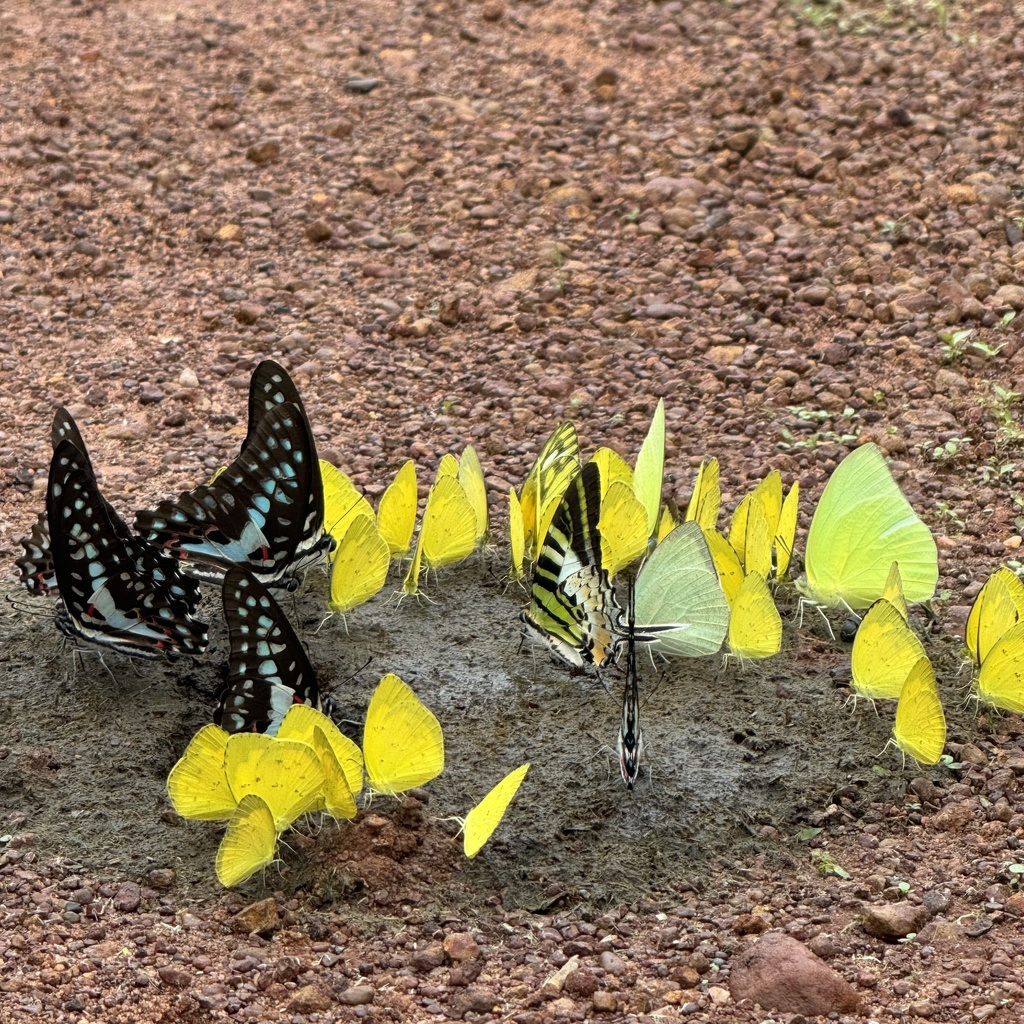









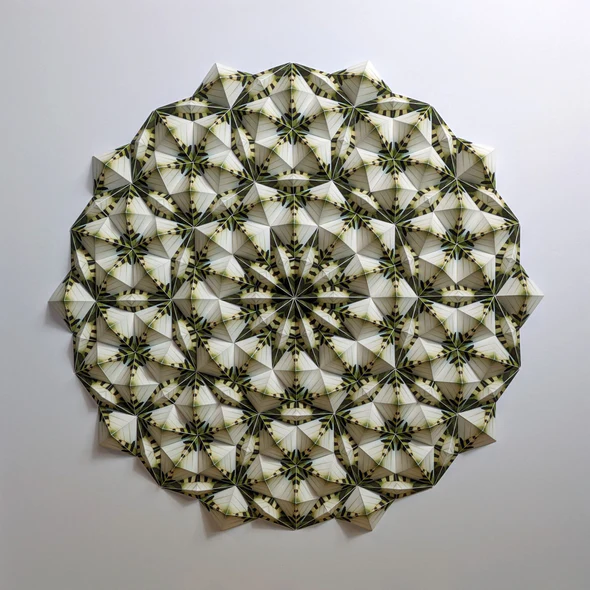




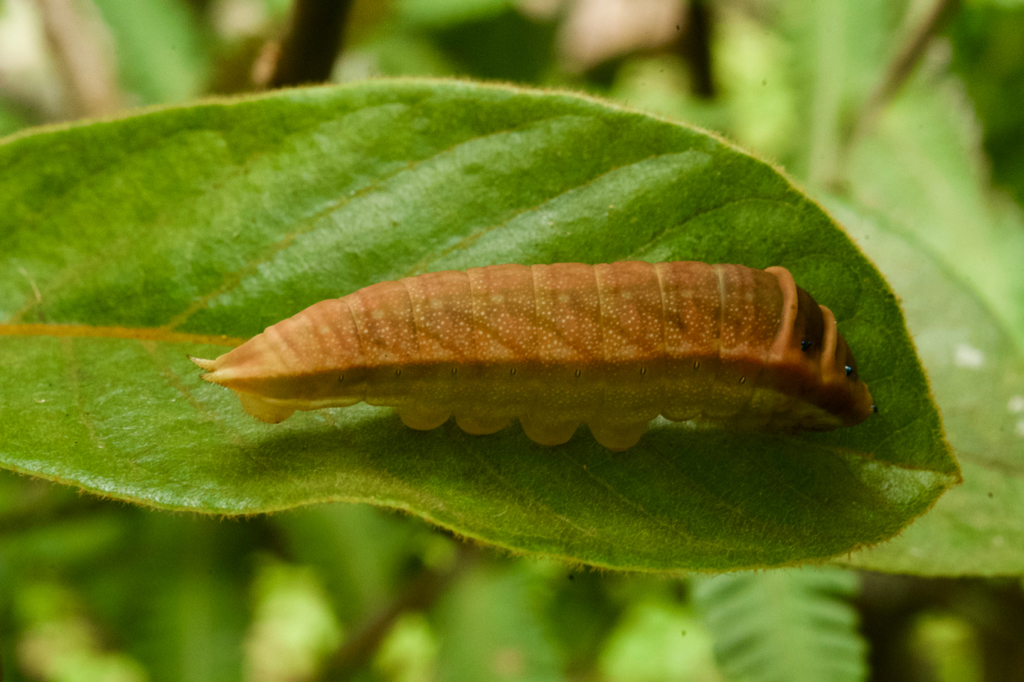
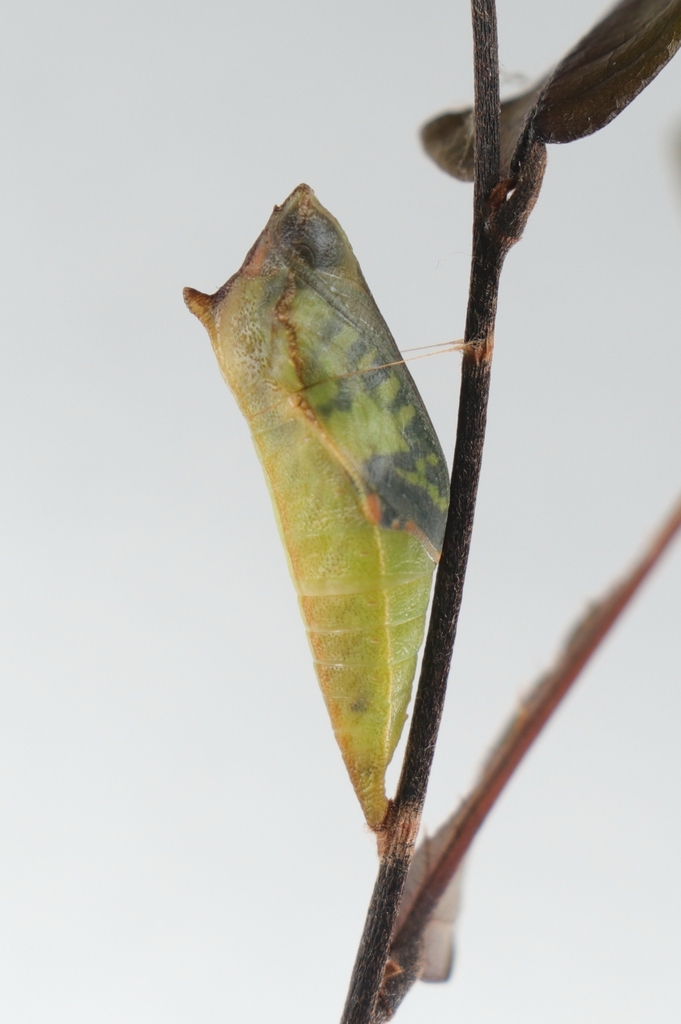
No comments:
Post a Comment